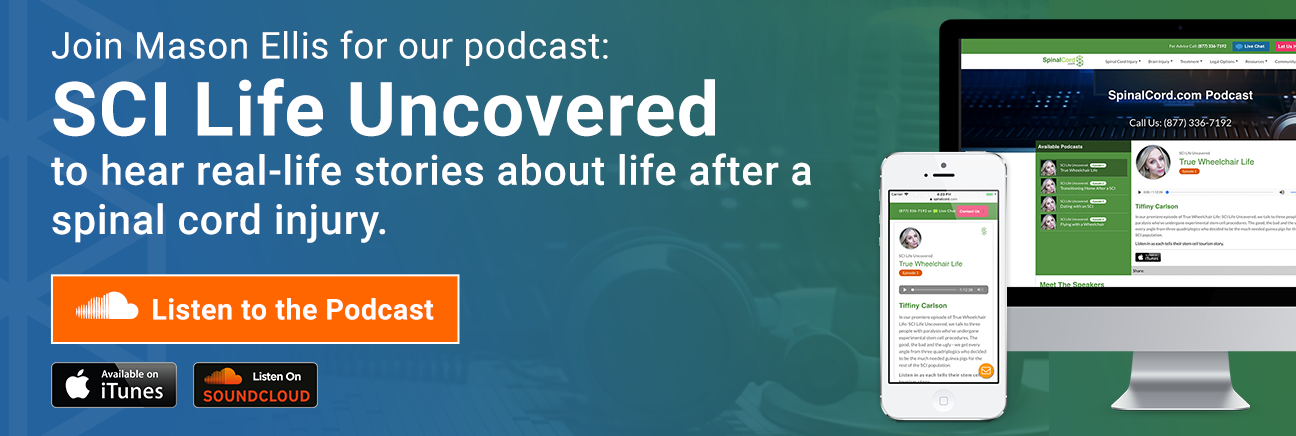Arachnoiditis: What You Need to Know
While most people are familiar with chronic pain from a spinal cord injury, there is another chronic pain condition that can be just as difficult to live with - Arachnoiditis. A disease that’s caused by a bacterial infection (in some rare cases it can be hereditary), Arachnoiditis causes the membrane surrounding the brain and spinal cord to become inflamed. This membrane is called the arachnoid and unfortunately, Arachnoiditis cannot be cured.
Arachnoiditis can cause chronic pain, but it can also cause mobility and sensation deficits. Simply put, Arachnoiditis can greatly affect your life. To learn more about this condition including how to diagnose and treat it, as well as research studies you may be eligible for, read more below.
Causes of Arachnoiditis
Despite being a bacterial infection, Arachnoiditis has multiple causes. One of the most common causes is a direct mechanical injury while under the care of a medical professional. This can be incredibly frustrating as well. Typically, when Arachnoiditis is caused by a medical professional it is due to a surgical intervention in the spinal area, such as a surgery, an infusion, an epidural or other minimally invasive procedures.
In general, however, any kind of trauma to the spinal cord, brain or nerve root can cause Arachnoiditis. A common trauma is epidural disc prolapse, as well as spinal taps, injections of myelogram dye into the spinal cord and an intrathecal injection of toxic fluids into the spinal dural sac during spinal surgery. Meningitis, whether it is viral, fungal or bacterial, can also cause Arachnoiditis.
In regards to who is affected, females are also more commonly affected by Arachnoiditis than males. This is likely because women are much more likely to undergo some kind of epidural anesthesia/spinal tap while in childbirth. Additionally, studies in the US show that 4% of pregnant women who receive an epidural anesthesia will develop arachnoiditis. As a result, there are approximately 11,000 new cases of Arachnoiditis in the US each year.
Symptoms of Arachnoiditis
After damage has occurred to your spinal cord, brain or nerve root, typically people will start experiencing chronic pain from the affected area within three months of the injury. The chronic pain will also begin, which is one of the telltale signs of this condition. The severity of these symptoms, however, depends on the extent and location of the injury to the affected area. When you first feel the intense pain, it will be followed by a tingling or burning in the legs and feet. People also report that their skin feels like bugs are crawling on them or water is dripping on them.
The intense pain will also be localized in the lower back, perineum, legs, and feet when it occurs. Because the pain can be so intense, people also report muscle cramps, gait abnormalities and alterations of proprioception. Other symptoms include severe headaches, hearing problems, dizziness, nausea and vision disturbances. Because the severe bacterial infection affects that nerves in the spinal cord or brain, people will also experience bowel, bladder and sexual dysfunction. Sometimes the pain is combined with electric shocks in the most severe patients.
Diagnosis of Arachnoiditis
If you think you may have Arachnoiditis, there are several ways doctors diagnose this condition. One of the most common is an MRI with contrast to verify the extent of the bacterial infection. Your doctor will also ask you several questions and conduct a clinical exam in regards to the injury you sustained. Your doctoral also likely want to ask you about the invasive procedure or serious illness that caused the condition.
A CT scan can also be used to diagnose Arachnoiditis, but in many cases of this condition, having to use the intrathecal injection of contrast that’s required to undergo a CT scan might make the condition worse. A physical is also required, and on a routine basis as well to monitor any changes because of the condition. Over time you'll see changes in your reflexes, sensory deficits and a weakening of the strength in your muscles. Your balance will also be monitored, as well as any strength difference in your right vs. you're the left side.
Treatment of Arachnoiditis
As stated above, there is no cure for Arachnoiditis, but there are treatments available which you can consult your doctor. One of the first therapies people try is medication. Schedule II opiates are often used to treat Arachnoiditis, but they should be used with great caution as they can be addictive. Schedule III drugs are also employed.
In addition to medication, physical therapy is used to treat the physical side effects of Arachnoiditis. Physical therapists help people with the condition by preserving their range of motion and function through massage and mild exercise. Hydrotherapy and hot and cold compresses are also used to help alleviate the pain.
And surgery is sometimes used, which can remove some scar tissue and fibrosis formation around the injured area. If successful, this can alleviate the nerve pain. And lastly, psychotherapy is also beneficial, as many people suffer from depression when they have Arachnoiditis. Learning coping techniques can make a huge difference when living with this disease.
Research Studies
The good news is that there are researchers working hard to uncover the mysteries of Arachnoiditis. You can search for clinical trials on Clinicaltrials.gov. One of the most popular experimental therapies is repeated therapeutic infusions for pain relief, and many patients with Arachnoiditis say that works. To learn more about clinical trials at the NIH clinical center, visit here: www.clinicaltrials.gov. You can also search for privately funded clinical trials for Arachnoiditis here: www.centerwatch.com.
Don't lose help in finding relief from Arachnoiditis. There are support groups available where you can talk to others to understand what you're going through, especially on Facebook. One of the most popular groups is ARACHNOIDITIS. You can join the group here: https://www.facebook.com/groups/arachnoiditis/
Stay Updated on Advancements On Traumatic Brain &
Spinal Cord Injuries
About the Author





